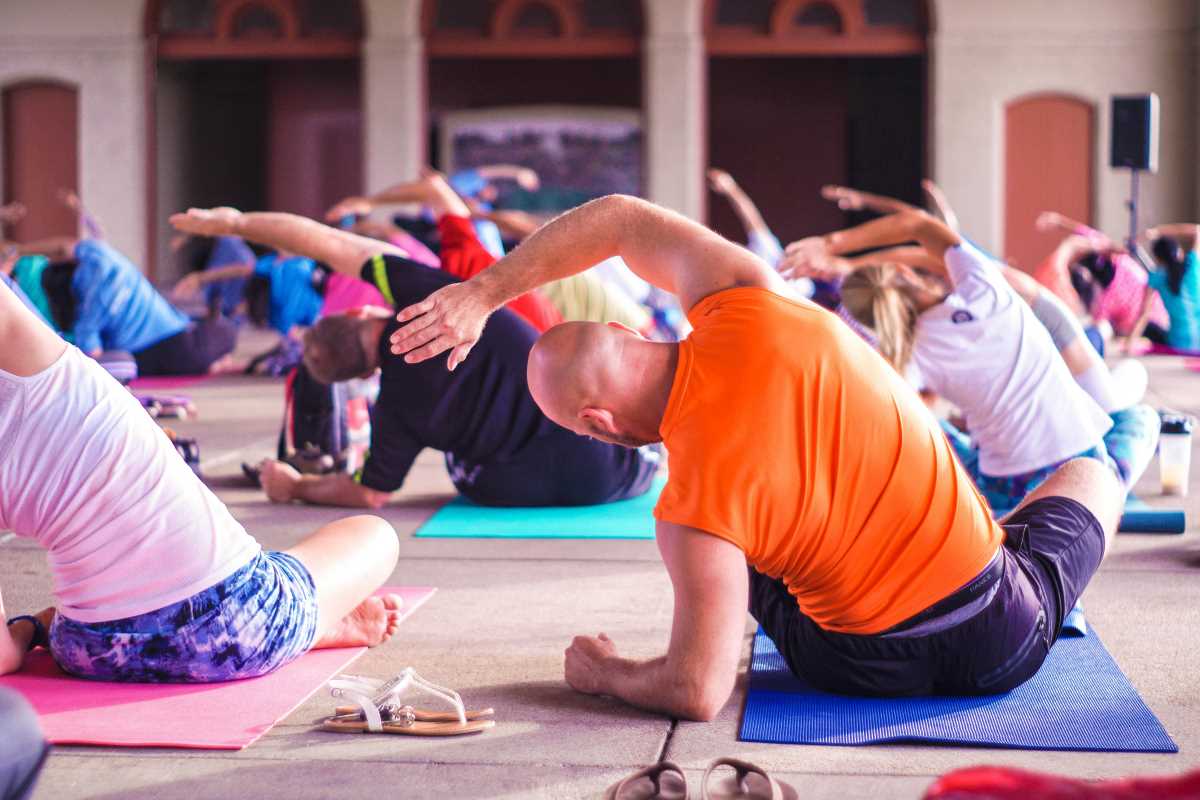Whether you spend long hours sitting at a desk or lead an active lifestyle, aches and pains are common occurrences. They can creep up unexpectedly, affecting your neck, shoulders, back, hips, and legs. While discomfort is often seen as an inevitable part of life, it doesn’t have to be. Incorporating simple stretches into your daily routine can provide much-needed relief, improve your flexibility, and even prevent future injuries. Stretching isn't just for athletes—it’s for everyone, and it can be done at any time, whether you're at your desk, watching TV, or winding down for bed. Let’s explore some easy stretches that target specific areas of the body to help alleviate discomfort and promote overall well-being.
Neck Stretches
One of the most common complaints among desk workers is neck pain, often caused by long hours spent in front of a computer. The muscles in the neck can become tight and strained from poor posture, such as slouching or craning your head forward to look at a screen. A simple and effective stretch to relieve neck tension is the neck tilt. This stretch can be done sitting or standing. Begin by sitting or standing tall with your shoulders relaxed. Slowly tilt your head to one side, bringing your ear toward your shoulder without raising your shoulder. You should feel a gentle stretch along the side of your neck. Hold this position for 15-30 seconds before switching sides. Repeat as needed to relieve tightness.
For deeper neck relief, you can also add a gentle pull with your hand by resting your hand on the side of your head and lightly pressing down toward your shoulder. However, be careful not to overdo it—stretching should feel good, not painful. Over time, regular neck stretches can help improve your posture and reduce the frequency of tension headaches and neck pain.
Shoulder Stretches
Tight shoulders can cause discomfort not only in the shoulders themselves but also in the neck and upper back. Shoulder tightness is often the result of sitting with hunched shoulders or repetitive overhead movements. The shoulder roll stretch is an easy exercise that can be done anywhere to relieve tension. Start by sitting or standing with your arms relaxed at your sides. Slowly roll your shoulders in a circular motion: up, back, and down. Repeat this motion 5-10 times, then reverse the direction, rolling your shoulders forward.
This stretch helps to release the muscles around your shoulder blades and upper back, which are often strained by poor posture or stress. In addition to shoulder rolls, try the cross-body shoulder stretch. Hold one arm straight out in front of you and use your opposite hand to pull it across your body toward the opposite shoulder. Hold for 15-30 seconds, then switch arms. Regular shoulder stretching can improve your shoulder mobility, making it easier to perform everyday tasks like reaching overhead or lifting objects.
Back Stretches
Back pain is one of the most widespread complaints among people of all ages. Whether you experience lower back pain from sitting too long or upper back discomfort from bad posture, stretching your back regularly can help prevent and alleviate pain. One of the most effective stretches for the back is the cat-cow stretch. This dynamic stretch is particularly helpful for promoting flexibility along the spine. Begin on your hands and knees, with your wrists directly under your shoulders and your knees under your hips.
As you inhale, arch your back toward the ceiling, rounding your spine and tucking your chin toward your chest (this is the “cat” part of the stretch). Then, as you exhale, drop your belly toward the floor and lift your head and tailbone (this is the “cow” part). Move through this sequence 5-10 times, syncing the movements with your breath. The cat-cow stretch gently loosens the muscles along the spine and increases spinal mobility, making it a great stretch for both lower and upper back pain.
Another stretch for the lower back is the seated forward fold. Sit with your legs extended in front of you, and gently hinge forward from your hips, reaching for your toes. You should feel a stretch along your hamstrings and lower back. Hold this stretch for 15-30 seconds to relieve tightness in the lower back, especially if you’ve been sitting for long periods.
Hip Stretches
Many people, especially those who spend a lot of time sitting, experience tight hips and lower back pain. Sitting for extended periods causes the hip flexors (the muscles in the front of the hips) to shorten, leading to stiffness and discomfort. The seated hip stretch is an excellent way to alleviate hip tightness. Sit tall in a chair with your feet flat on the ground. Cross one ankle over the opposite knee, creating a figure-four shape with your legs. Gently lean forward from your hips until you feel a stretch in the hip of the crossed leg. Hold this position for 15-30 seconds, then switch sides.
For a more intense hip stretch, try the pigeon pose, which is commonly used in yoga. Start on all fours, then bring one knee forward and place it behind your wrist, while extending the opposite leg straight back. Lower your hips toward the floor, keeping your upper body tall. This stretch targets the deep hip muscles and can help relieve tension and improve flexibility in the hips and lower back.
Hamstring Stretches
Tight hamstrings are another common cause of lower back pain and can limit your overall flexibility. The standing hamstring stretch is a simple yet effective way to release tension in the back of the legs. Stand with your feet hip-width apart, then hinge at the hips to bend forward, reaching toward your toes. Try to keep your back as straight as possible to prevent straining your lower back. If you can’t reach your toes, rest your hands on your shins or a chair for support. Hold this stretch for 15-30 seconds. This stretch not only improves hamstring flexibility but also helps to lengthen the muscles in the lower back, reducing strain.
Calf Stretches
Calf tightness can develop from activities like running, cycling, or even wearing high heels. Tight calves can lead to discomfort in the feet, ankles, and even knees. To relieve this tension, try the standing calf stretch. Stand facing a wall with one foot forward and the other foot back, both feet flat on the ground. Press your back heel into the ground as you lean forward slightly, keeping your back leg straight. You should feel a stretch in the calf of your back leg. Hold for 15-30 seconds, then switch sides.
This stretch helps improve the flexibility of the calf muscles, preventing calf cramps and easing tension in the lower legs. If you experience frequent calf tightness, incorporating this stretch into your routine can improve mobility and prevent injury.
Incorporating these simple stretches into your daily routine can make a significant difference in how your body feels. Whether you’re battling neck tension, shoulder tightness, back pain, or stiff hips, stretching can provide relief and improve your flexibility over time. These stretches are easy to do at home or in the office and take only a few minutes each day. Listen to your body, stretch gently, and avoid any movements that cause pain. With regular practice, stretching can become a powerful tool to help you move through your day with more ease and less discomfort.
 (Image via
(Image via





